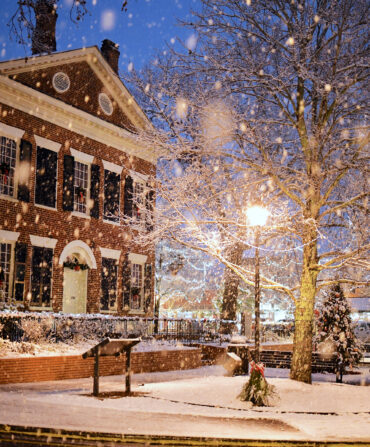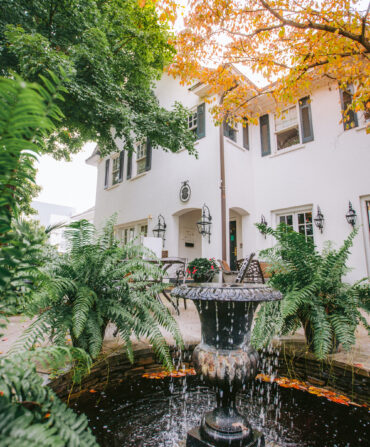The Gulf of Mexico takes on a special glow as the sun sinks over the western edge of Cape Sable, the Florida mainland’s southernmost point. As I walked down the empty beach to admire the view, the crackle of my campfire slowly faded into the sound of the retreating tide. I had visited this same spot in the Everglades a year before, but it’s hard to adapt to the overwhelming beauty of such unspoiled landscape. I took a sip of wine from an enamel camping mug, watched two pelicans glide over the horizon, and turned back toward my campsite. It was dinnertime.
The idea of American wilderness is dominated by mountains, thick forests, grizzlies, and pristine lakes. But the Everglades are a different kind of wild, a marshy frontier that has attracted adventurers, naturalists, writers, scientists, outlaws, and free-spirited wanderers since before Florida was Florida. In her seminal 1947 book, The Everglades: River of Grass, which redefined the popular conception of what most considered a worthless swamp, Marjory Stoneman Douglas writes, “Nothing anywhere else is like them; their vast glittering openness, wider than the enormous visible round of the horizon, the racing free saltness and sweetness of their massive winds, under the dazzling blue heights of space.… The miracle of the light pours over the green and brown expanse of saw grass and of water, shining and slow-moving below.”

Photo: Mikael Kennedy
Points South
The drive form Miami to Flamingo slices through uncommonly beautiful landscape.
When most of us think of the Everglades, we envision rivers rippled with bright yellow gator eyes popping up periscope-style and the wake of the occasional fan boat. The idea of camping in its eerie depths seems like the plot engine of a survivalist reality show. But the southern Everglades resemble a prehistoric beach paradise more than a swamp. To explore its mangroves and sandy shores up close, hop in a canoe and spend a few days paddling around the Cape Sable peninsula. The trip is easier than you might think, and because it’s only suitable to undertake during the dry season from December through April, it’s an ideal warm getaway during the long, cold stretches of winter.
Most of my camping adventures involve walking long distances, which means paying close attention to the weight of everything I put in my pack. With a canoe to carry the load, you can stock up, so during the drive from Miami International Airport to the Flamingo Visitor Center, my traveling companion Mikael (the photographer for this story) and I didn’t skimp on provisions—lots of water, wine, bread, and avocados and tortillas for veggie tacos.

Photo: Mikael Kennedy
Beach Bound
A canoe full of provisions––including tents and a cooler––on the beach at East Cape.
Established in the late nineteenth century after the Seminole Wars, Flamingo, Florida, was home to settlers who provided fish and vegetables for nearby Key West until the 1930s, when the site was incorporated as the southern headquarters for Everglades National Park. The drive from Miami is an easy two-hour trip. Just south of Florida City, a mere forty miles from the imported white sands of South Beach, is a turn for Main Park Road, a lazy thirty-eight-mile stretch through cypress domes, mangrove swamps, pinelands, and hardwood hammocks, dense stands of broad-leafed trees that grow only a few inches in elevation. Until 1922, a person could only reach the area by boat. Today, the road marks the beginning of the descent into National Park Service territory.

Photo: Mikael Kennedy
Frontier Spirit
The Flamingo Visitor Center is Everglades National Park’s southernmost headquarters.
The Flamingo Visitor Center is long and proud, perched up against the water in a matte pink overcoat, overlooking the boats that whip in and out of the marina. While filling out the paperwork to obtain our backcountry permits and getting the park’s rules and regulations read to us by a middle-aged female ranger from Ohio, Mikael and I checked the weather chalkboard just to the left of the main office. We had originally planned on making our way to Middle Cape, a long paddle from the visitor center, but because of wind, we would now make our first night’s camp at East Cape, a roughly ten-mile paddle, then backtrack to Clubhouse Beach the second night, about seven miles from where we were standing. We walked down to the marina store to rent our canoe and buy firewood, loaded up the contents of the car’s trunk into dry bags and a large cooler, and made our way out of Florida Bay and into the Gulf of Mexico.
The Everglades are home to a dizzying amount of wildlife, and while paddling it’s hard not to be distracted by the beauty of large winged creatures flying overhead. Within the first few minutes of our passing Bradley Key, a heron began gliding back and forth, up and down over our canoe as if to welcome us into its home (or maybe it was eyeing the mullet jumping around our boat). Fortunately, the waters are easy to navigate, with Cape Sable on your right and, many miles out of sight to the south, the Florida Keys. As long as the mangrove shore stays at your right, it’s impossible to get lost.

Photo: Mikael Kennedy
A view from Clubhouse Beach.
An hour into the trip, we saw a couple from Fort Lauderdale who had been with us in the visitor center appear in the distance, proudly paddling in unison. A few hours later, we reached the campground at East Cape, a long and thin beach. Deep in the Everglades, camping is often relegated to chickees, elevated wooden platforms set up where lack of dry land prevents ground camping. But nothing beats a fire and sand-covered feet as the stars light up the night sky.
After setting up our tents and grilling grate, we reached into the cooler to grab a bottle of wine. Sure, this is backcountry camping, but when you have the option of luxury with no extra difficulty, why not indulge?

Photo: Mikael Kennedy
Dinner on the grill.
We spent the rest of the afternoon reading quietly and exploring the beach in solitude, reapplying sunscreen and switching from wine to water, water to wine, as needed. Around 5:00 or 6:00 p.m. (I had left my watch in the car, a custom I take with me from my days at summer camp), the Fort Lauderdale couple arrived, making camp on the opposite end of the beach behind a pile of downed trees, completely out of sight. We made a fire, grilled vegetables, and assembled an alfresco taco dinner. When the sun finally went down, we retreated to our tents and dozed off as the tide went out.
The camping area at Clubhouse Beach lies about three miles from East Cape on the way back to Flamingo, so we slept in on the second day and took our time pushing off. After navigating the ten-mile stretch the day before, we welcomed the rest and the shorter paddle. And the earlier arrival time left us a full, lazy afternoon to enjoy the solitude of the empty beach, which is smaller than East Cape but no less breathtaking.
By the time we paddled back to the marina on the third day, Mikael and I had both fallen silent—not from fatigue or from the heat, not from a sense of accomplishment or the promise of a long shower, but from the overwhelming discovery of a new type of wild, one that has been there all along, waiting to be explored with ease.








